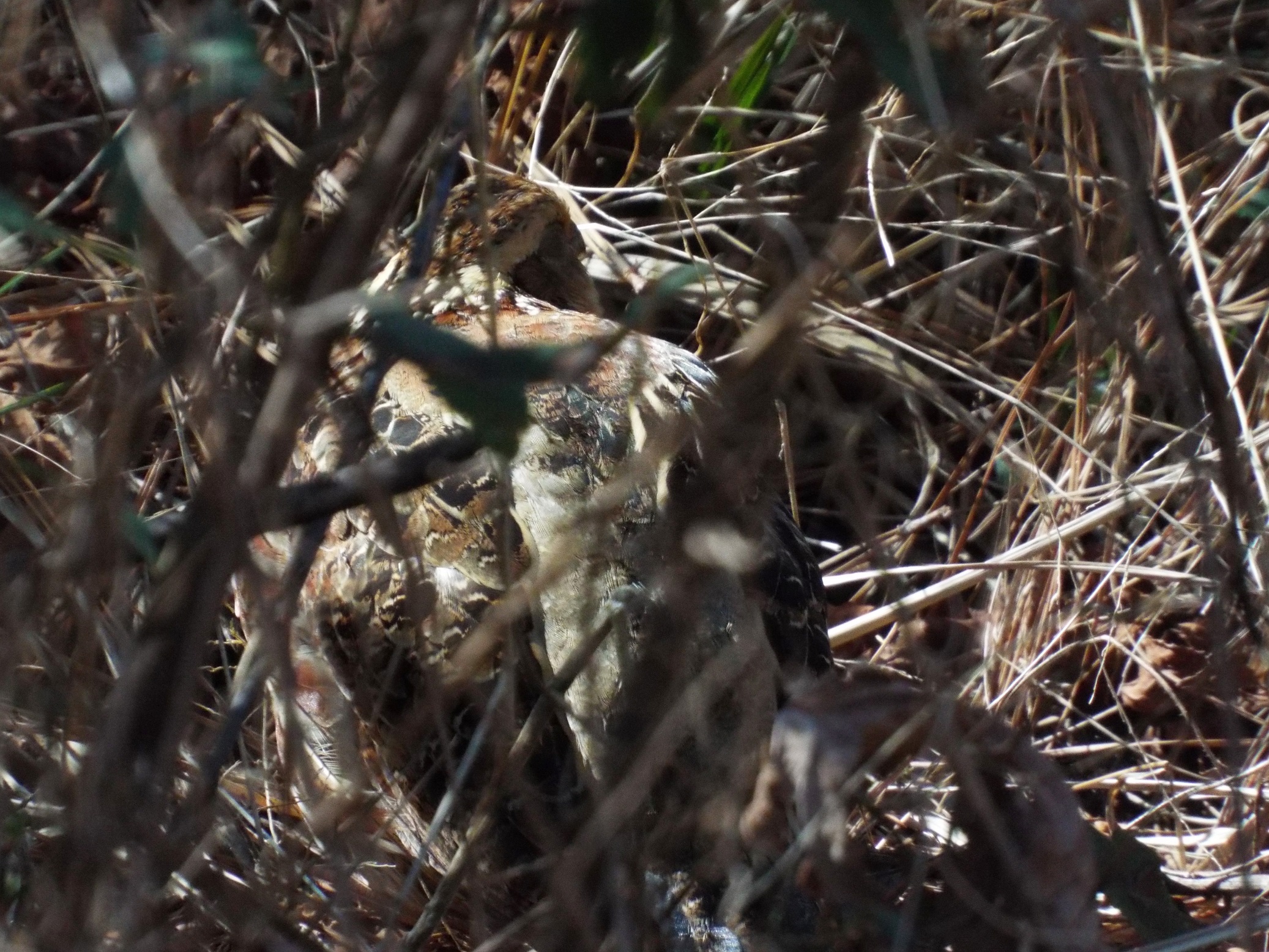
This week for Flora and Fauna Friday, it’s our once prolific, pint-sized partridge, the Northern Bobwhite (Colinus virginianus).
The Bobwhite is our resident species of quail found throughout the Southeast and Mississippi River Basin. They’re about the size of a Mourning Dove but taller and stockier. Bobwhite have a small round head, short but heavy beak, football-shaped body, stubby tail, and strong legs. Both males and females are cryptically colored with an intricate mottling of black on white across the belly that bleeds up into the rust-washed flanks and folds below a nigh kaleidoscopic slurry of camouflaged grays and browns over the back. Males wear a white beard, black mask, heavy white eyebrow, and dark speckled cap. Female have a similar facial pattern but of golden and neutral browns. Due to their small size and cryptic coloring, quail are tough to get a good look at. However, they’re not hard to hear. The male sings an unmistakable whistle of “bob-Bob-WHITE” that rings across the countryside, like a church bell on Sunday morning, and gave the Bobwhite its common name. Bobwhite are ground birds and spend their entire lives walking, foraging, and nesting on the ground. There they feed on insects, seeds, fruits, and vegetation. Being a bite-sized biddy your whole life has its downsides. To compensate, quail live in groups, called coveys, which are comprised of a handful of birds at the low end and up to several dozen on the high end. Living in groups increases the number of eyes on the lookout for predators and helps the birds escape harm. When startled, coveys explode out of cover and take to the air, flying to better cover a distance away. Bobwhite have particular habitat needs, which helps assure they have ample food and cover in the right types and quantities year-round. This gives them the best opportunities to hide and escape from predators, as well as the chance to raise a nest of young ‘uns. Bobwhite are most commonly found in pine savannas, fallow fields, grasslands, clear-cuts, and the borders of crop fields. All big open areas with lots of vegetation. However, their habitat requirements are not as simple as they sound and they need very specific conditions, consistently, across huge areas for populations to remain stable. This makes Bobwhite sporadically common on the landscape nowadays and more often than not a pleasant surprise to find, rather than a guarantee.
However, the Southeast was once thick like rats with Bobwhite. Their coveys littered fields and savannas in every corner of the South and a rich hunting tradition evolved around the quail. However, Bobwhite rapidly started disappearing from the landscape in the 1970s. The reasons for this are complex and not fully understood. However, it’s thought to boil down to habitat loss, degradation, and fragmentation. In order to thrive, Bobwhite need grasslands and other brushy open areas to be maintained in diverse conditions in large interconnected matrixes across the landscape. Historically, farms provided a lot of this habitat within their row crops, on their margins, in the fields left fallow for rotation, and in the regularly burned pine woods and forests that surrounded them. All these farms then abutted each other across the entire Southeast to create one giant network of suitable Bobwhite habitats. Over the years as new technologies were invented, farms progressively increased their land use efficiency. Meaning they got bigger, more orderly, left less land out of cultivation, and became cleaner. Particularly, the advent and widespread use of modern selective herbicides and insecticides also meant there were less weeds and insects in and surrounding farm fields, removing important quail cover and food. Simultaneously, the number of farms and the amount of land in agriculture shrank. To cap it off, the anti-forest fire campaigns that started in the 1950s sought to wipe low-intensity prescribed fire from the southeastern landscape, in a misguided effort to prevent wildfires back before we understood the ecology of these fire-adapted systems. These factors all in combination started eroding Bobwhite habitat from every angle, until a tipping point was hit and quail populations started rapidly evaporating across the United States. Over the last 50 years, great efforts have been taken by all manner of federal, state, and local natural resources agencies to study quail populations and habitat, and many nonprofit organizations and conservation programs were founded to halt the decline of Bobwhite and other upland game bird species. Many Bobwhite populations across the Southeast have stabilized and the species as a whole is no longer in immediate danger. However, as the core landscape and land uses of the Southeast have changed dramatically, and continue to change, Bobwhite will almost assuredly never return to their historic abundance. Yet, with any luck, we can continue to make strides towards making room for them in the Lowcountry once again.